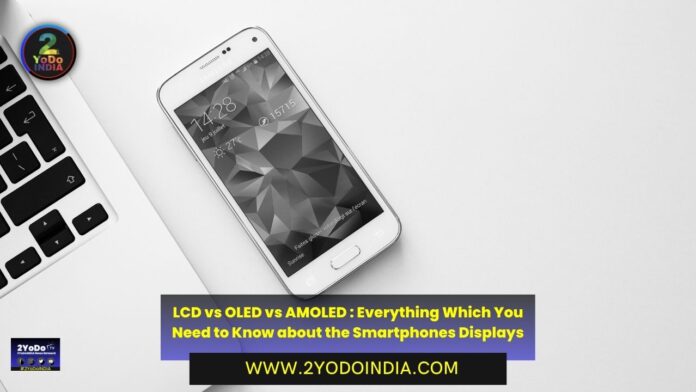Many are confuse between LCD, OLED, and AMOLED displays on phones? Which one is good? What is the difference? These questions may come to mind, as Nothing recently launch its Phone (2) smartphone comes with an OLED display.
We have also know about 5G phones with pOLED or LCD displays.
But, do you know the difference and benefits of each display type?
What is LCD Display?
LCD stands for Liquid Crystal Display.
LCD Display is a common display tech seen on many electronic devices like smartphones.
As LCDs work by using a backlight to illuminate pixels on the screen.
The backlight shines through the liquid crystals, and the arrangement of these crystals determines the amount of light that passes through each pixel, creating the images you see on the screen.
LCD displays are generally cheaper for smartphone companies when compare with OLEDs.
So, LCDs have a limit viewing angle and don’t produce true blacks because the backlight is always on.
Even when your smartphone screen is displaying dark content, the backlight remains on, unlike OLED.
Which makes it less efficient in saving power compare to AMOLED displays.
What is OLED Display?
OLED stands for Organic Light Emitting Diode.
OLED displays don’t require a separate backlight.
Each individual pixel in an OLED display emits its own light when an electric current is applied.
When a pixel is off, it produces true black because no light is emitted from it.
OLED displays offer better contrast, more vibrant colors, and deeper blacks compare to LCDs.
They are also thinner, lighter, and more flexible, as per smartphone companies.
So, OLED displays are more expensive for companies than LCDs.
That is why users usually see LCDs on low-priced phones.
What is AMOLED Display?
AMOLED stands for Active Matrix Organic Light Emitting Diode and is an improved version of OLED display technology that uses an active matrix tech to control each individual pixel. AMOLED displays use a thin-film transistor (TFT) to control each pixel actively. This means each pixel automatically turns on or off independently for precise control over the display.
It is important to note that AMOLED displays inherit the benefits of OLED technology (like vibrant colors, and true blacks), but it consumes less power when displaying darker content since individual pixels can be turned off.
LCD vs OLEDs
LCDs use a backlight to illuminate pixels and OLED and AMOLED displays have self-emissive pixels that individually emit light.
OLED and AMOLED displays mostly offer better image quality with vibrant colors and true blacks, but they can be more expensive to produce.
LCDs are more cost-effective but the visual appearance is not matchable to OLEDs.
What is pOLED and Super AMOLED Plus Display?
pOLED stands for Plastic Organic Light Emitting Diode.
pOLED is a type of OLED display technology that uses a plastic substrate instead of the traditional glass substrate.
Now, what is a substrate?
It is a base layer of a structure such as a display or chip.
This OLED type uses plastic for more flexibility in design and enables companies to create curved or flexible displays.
It can be use in foldable phones.
Some of the traditional phones from Motorola also have pOLED, probably because this display type is lightweight and helps companies offer a phone with a slim design.
So, pOLED displays are said to have slightly lower image quality compare to some other OLED technologies.
Super AMOLED Plus is similar to AMOLED display with a minor difference.
This technology has develop and market by Samsung to offer a slightly better experience.
Super AMOLED Plus displays feature an integrated touch sensor directly on the screen, eliminating the need for a separate touch-sensitive layer.
This integration reduces screen thickness and increases display clarity.
Which is better OLED or AMOLED Displays?
AMOLED is consider better than OLED for phone displays.
The reason is that AMOLED builds upon OLED technology by incorporating an active matrix of transistors for individual pixel control instead of using organic materials between conductors of an LED.
Means, AMOLED has the ability to control individual pixels and switch them quickly, which enables precise and rapid control over the display’s output.
This results in improve image quality, enhance color accuracy, deeper blacks, and better power efficiency compare to regular OLED displays.
AMOLED screens offer higher contrast ratios and even have energy-saving capabilities.
So, you may get better battery life on this, but this factor also depends on the phone’s software and other hardware used internally.





